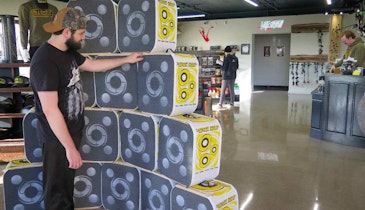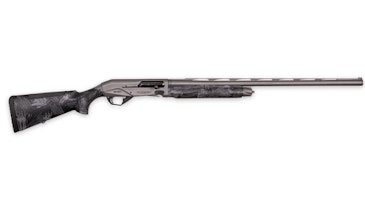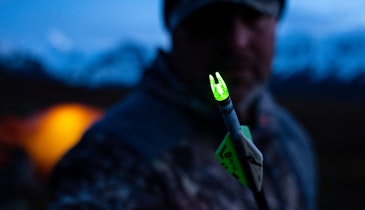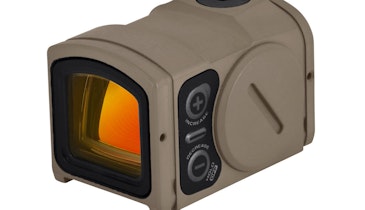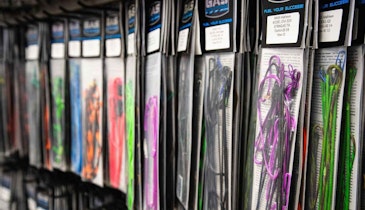We have all heard the old saying “the customer is always right.” Yes, this is true, but there are times when the customer simply doesn’t know and they need the guidance of a professional to steer them in the right direction. This can be true of the newbie or even the seasoned professional. The area I want to speak of here is dealing with shooters with not-so-clear vision. This not only causes poor shooting, but it can greatly degrade the archery experience.
To explain this in more detail, I’d like to give you some background experience on my story, and you might see a clearer picture of what some of your customers may be dealing with.
As a youngster and through my early adult years, I never had any issues with my eyesight. I could always see very well, and in turn my shooting was never an issue; I’ve always been a pretty good shot. I could also shoot about any bowsight and peep combination and would have a clean sight picture.
That was until my mid 30s when, like many people, my vision started to blur. Over the course of the next 5 or 6 years, I went through a very frustrating journey. Albeit more extreme circumstances followed for me, but I believe many people suffer from some amount of blurred vision that hinders shooting accuracy.
I had PRK surgery, which is like Lasik, but a little different. This procedure better fit me because of my thin corneas and severe astigmatism. What they didn’t catch then was the fact I had a degenerative eye disease called keratoconus.
I won’t go into specifics, but there is a reason I’m telling this whole story. Namely, I talked to a lot of people from pro shooters, bow gurus, pro shop owners and even a hunting acquaintance who is an optometrist. Although a lot of people offered ideas and advice, my vision when shooting just kept getting worse and worse.
There would be days when I could see fairly well, and others when I literally couldn’t even shoot because I was seeing up to 10 pins even though I was shooting a three-pin sight. Through this journey I tried several different things, most of which helped to some extent and would undoubtedly help the more “normal” shooter even more than it did me because of my medical condition.
One truth I’ve come to realize now is even though multiple pro shop owners would listen and were sympathetic, they didn’t generally have a lot of answers.
I understand that the archery industry and most stores are built around offering products that the majority of their customers will like and buy. That said, I think a little extra time spent with customers dealing with failing vision will make them much happier and enhance their joy of archery. Following are some tricks that worked for me, ones that might benefit your customers.
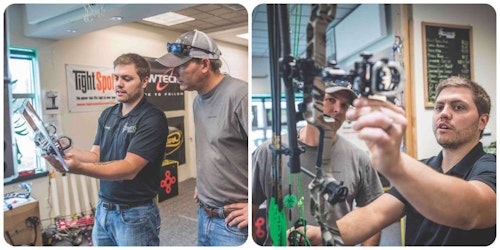
Bowsight Choice
I know we went over the “customer is always right” topic. I think this is one area where pro shop owners and store employees need to push back a little bit.
Let’s say you have a customer who is dead set on a three-pin slider sight. Of course, you should show them that sight. But, I think taking the time to make sure they have a clear sight picture is time well spent. Ask if they can see all three pins clearly, or does one color really not stand out to them. Maybe show them another model with .019-inch pins instead of .029-inch pins and maybe they won’t halo as bad on them.
I also noticed that with my particular vision issues, ultra-bright pins weren’t always the best option. I think in bright sunlight, pins tend to glare somewhat for some people, but with people dealing with astigmatism and other issues, it can be exaggerated. Due to this a pin that maybe isn’t quite as bright or pins that are fully wrapped with just the aiming point exposed can be better. Like I said, there isn’t one thing that works for everyone, so your customers having options can have a more favorable end result.
Maybe a one-pin sight would better suit them and they wouldn’t have pins blurring together. These are all just things to consider when they are purchasing a sight. Oftentimes as archery consumers we just think this is what we want and just buy it, without even exploring other options that could be better for us and make us shoot more accurately. As my condition worsened and I tried multiple products to keep me shooting, a single-pin slider sight with a vertical pin was the best option for me.
If a customer is dead set on a certain product, by all means sell it to them. However, if a customer knows that you have their best interest at heart, they might be willing to look at other options and will be much happier in the end.
Peep Size
Peep size is another consideration that the majority of archers don’t give much thought. They just buy what peep the store sells or the shop simply just installs the same peep that they install in most strings. Again, this generally works, but there are times that going against the norm can really benefit some shooters.
A couple years ago I was talking to a buddy who is not only a great hunter and shooter, but is also a great photographer and videographer. I told him of the troubles I was having and he asked if I had experimented with different peep sizes. He told me that he had been having similar issue as me, and he had been experimenting with peep size quite a lot.
He discovered that using a smaller peep helped with his vision issues. He explained it in camera terms like the peep being an aperture on a camera. The aperture when smaller allows less light to enter. This changed the sight picture and can at times clean up that sight picture substantially. He didn’t have vision issues as severe as me, but was definitely not seeing as clearly as in the past.
This friend of mine is a world-class bowhunter who is selecting all his gear with bowhunting in mind. Bowhunting as we all know, can often happen in low-light conditions. He said using a smaller peep size he probably lost a few minutes of shooting light in the morning and evenings, but being able to shoot with a clearer sight picture was worth the tradeoff.

After our talk, I ordered multiple peep sights, many of which were much smaller than I would ever tried in the past. I’m here to tell you this helped me dramatically, and I think it can oftentimes help many archers. I tried multiple different peep sizes through this process and definitely saw improvements.
It’s no secret that a smaller peep can be better for accurate shooting, and I shot well with the smaller sizes. Ultimately though, some peeps were just too small to be practical for bowhunting, but I did end up settling on a much smaller peep that the standard 3/16- or 1/4-inch peeps I had used in the past.
Another lesson I learned is with my eyes failing, I couldn’t tolerate my peep being slightly misaligned. I know that as shop owners and employees, striving for a straight peep is always the goal, but I often see archers who don’t have their peeps lined up correctly. Most can shoot fine with them being not perfect, but with poor vision it isn’t as easy.
I think explaining this to new shooters is pivotal. Teach them what to look for and how to correct their peep as strings stretch and settle.
Verifiers and Clarifiers
I’m sure to most of you this section will be common knowledge, but it’s worth mentioning these two products. Clarifier peeps are made to use in conjunction with a scope or sight with a lens to clear up a blurry target for those with this problem. Clarifiers are valuable in these situations, but it’s a niche group of shooters.
I do believe, though, that verifiers can be very beneficial to a lot of shooters. Verifiers are great, especially for archers as they age and can’t get their pins in focus. Companies like Specialty Archery Company make a peep with a housing that can be used with or without lenses. They have a Display Tool that can be used in the shop for people to choose which lens will work best for them to clear up their sight picture. Then you can install the lens and have them try to see if it’s the best one. I found I needed to shoot both inside and outside and at varied distances to find just the right verifier lens as opposed to just looking through the peep indoors at close distances. *Disclaimer: Make sure a peep with a lens is legal in the state it’s being used in if the shooter plans to hunt with this style of peep.
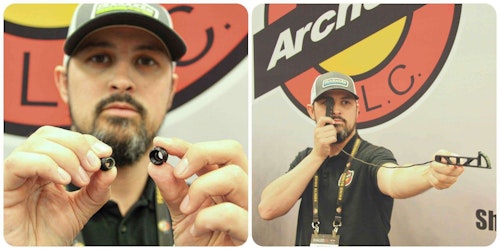
Final Thoughts
I understand that time is money. It can be a pain going through so many different options with customers. Even so, I think there are times that the extra time spent will really make a huge difference.
Because of failing vision, I was losing my joy of shooting a bow. If it weren’t for certain people helping me out, I don’t know how I could have continued bowhunting.
Ultimately for me, surgery and specialized contact lenses were the only cure in the end, but for most people, tweaks to their archery equipment will do the trick.
I know for a bunch of folks, and men in particular, tend to be too proud to say our vision is not what it once was. Something about getting old and not being immortal I suppose, but it’s hard to admit.
Your customers come to your archery shop for your expertise; they want to shoot better and purchase products that help them succeed. The least you can do is take the time to make sure they have the right tools.
Sidebar: Sight Housing Size
Does your peep need to match the housing size on your sight when looking through it at full draw? For years it seems that this has been the general rule. I subscribed to this theory for decades, and honestly it served me well. It no doubt makes for a nice sight picture, and it’s something that can be replicated from shot to shot easily.
The honest truth, however, is it isn’t “necessary.” If this style is preferred by a customer, then fine, but if a shooter wants to use a bigger or smaller peep, that’s okay, too.
When shooting, your eye tends to naturally center the pin in the peep. As long as the shooter does this, and it is a repeatable process from shot to shot, accuracy should be on par with having a peep chosen to match the size of the sight housing.
Archery shop photos by John Hafner



